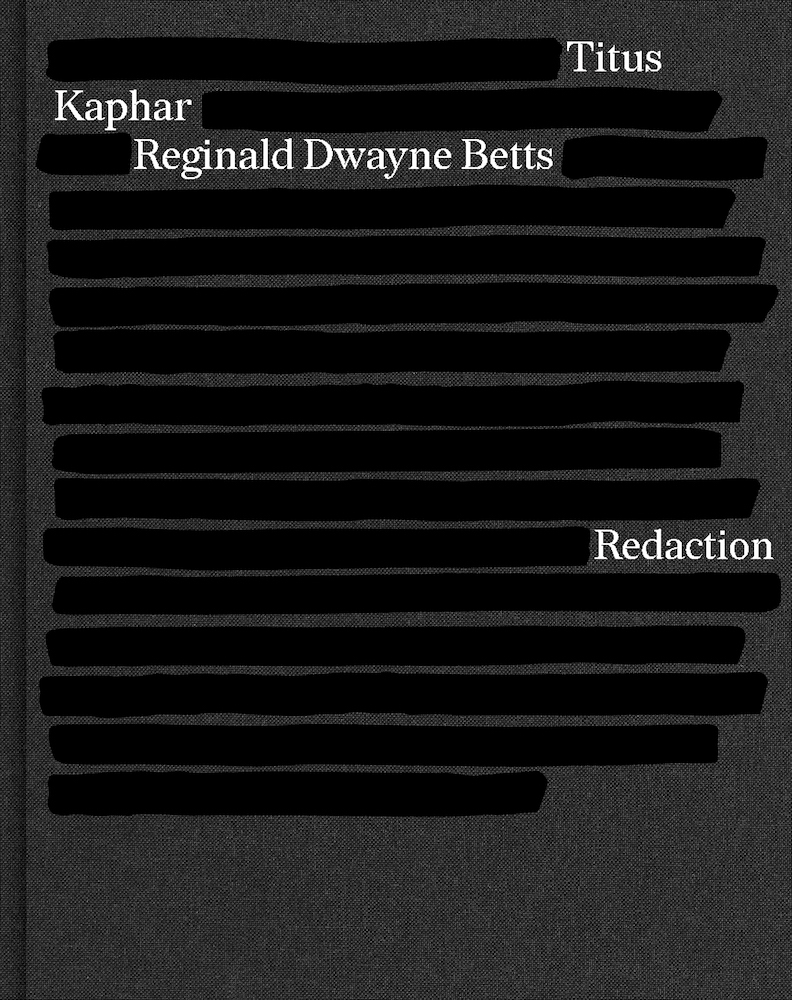A powerful indictment of the American legal system, “Redaction,” a collaboration between poet Reginald Dwayne Betts and visual artist Titus Kaphar, began its life as a 2019 exhibition at MoMA PS1 in New York. As a follow-up to the show, the artists, who are both Black, decided to produce a book version of the same name, published by W. W. Norton, to attain wider distribution, particularly among members of the poorer Black communities.
Redaction focuses on the way this demographic is victimized in both state and federal courts because they can’t afford bail, traffic tickets or court fees. If they don’t pay, they are thrown in jail even though they haven’t been tried or convicted of any crime—a flagrant violation of the Eighth Amendment, which states: “Excessive bail shall not be required, nor excessive fines imposed, nor cruel and unusual punishments inflicted.”
For Betts and Kaphar, this is personal. Kaphar’s father was often in prison during his childhood, and Betts spent more than eight years in jail, including 14 months in solitary confinement, for a carjacking he committed when he was 16. Books saved him, and when he got out, he went to college, graduate school and, in an amazing feat of transformation, received his Juris Doctor from Yale Law School, where he is currently pursuing a PhD. He has accomplished so much, climbing out of a very deep hole to reach the very heights of the legal profession. And yet, despite all his achievements, the shadow of those incarcerated years still looms over his life.
Kaphar’s ascent in the art world is almost as dramatic. This bona fide art star, with work in major museums and representation by Gagosian, used to help his family make extra cash by carting trash to the dump. The two men have rightfully been honored with a wealth of prestigious awards, including MacArthur fellowships.
Paired with Kaphar’s artwork in the book, Betts’ poetry uses the actual text from Civil Rights Corps lawsuits filed on behalf of jailed people whose constitutional rights have been violated as its basis. He employs the process of redaction to hide words and phrases, but he turns it on its head, revealing the most provocative and obscuring the rest, adroitly wresting poetry out of tedious legalese.
Kaphar is known for his galvanizing work (paintings, sculptures and installations) that reassesses history, taking figures from notable historical and art-historical paintings out of their idealized vacuum and exposing them to a contemporary retelling in both a visual and historically accurate manner.
Kaphar’s series of portraits of those unfairly jailed are simply beautiful. His delicate lines and spare compositions produce likenesses of great authenticity and power. Despite the sadness and frustration, all the subjects appear serene. Kaphar finds the dignity and nobility in them and amplifies it.
Stunning etchings in white ink on black paper combine Kaphar’s portraits with Betts’ poetry and lines of redacted text, overlaid with eye-catching gunmetal. The lines resemble prison bars; they also recall the bars on the US flag that represent the original 13 colonies—all of which benefited, directly or indirectly from slavery. In either case, the faces of the incarcerated individuals are separated from us (and their freedom) by those bars.
Reading Betts’ trenchant language is an experience that leaves no doubt in one’s mind that while the 13th Amendment may have abolished chattel slavery, it continues within the walls of our prisons where racist hierarchies are maintained and free labor is extracted.
Betts and Kaphar’s commitment to social engagement extends well beyond their creative practice, with each establishing important nonprofit organizations. Kaphar’s NXTHVN (nxthvn.com), founded with Jason Price and Jonathan Brand, is in New Haven’s historical African-American neighborhood of Dixwell. A vibrant arts incubator and fellowship program, NXTHVN supports individual artists and curators through education and access to a lively arts-centric community. NXTHVN helps further the careers of young artists, helping them navigate the art world and providing opportunities for professional artists, while enhancing the larger community of New Haven. Betts, meanwhile, is the founder and director of Freedom Reads (freedomreads.org), which places books into prisons via its Freedom Libraries—movable wood shelving units that hold 500 books—in the hopes of uplifting incarcerated individuals and maybe even helping them conceive a positive way forward. As of this writing, Freedom Reads has installed 172 prison libraries in 10 states.
In concert with the MoMA PS1 exhibition, Kaphar and Betts commissioned a typeface that could serve as an alternative to such fonts as Times New Roman, the norm for US legal documents, and New Century Schoolbook, which is used by SCOTUS. Now an ongoing statement, the use of the Redaction font, along with the book itself, protests the unconstitutional and racist practices of these institutions.


